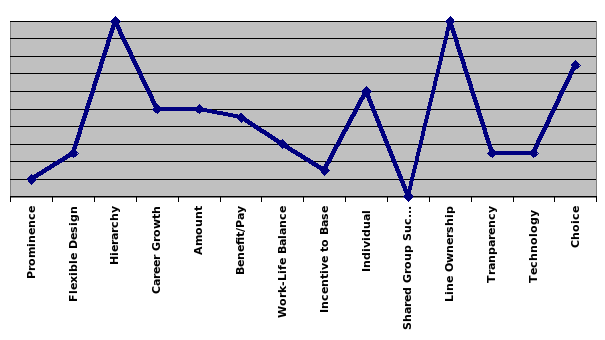Key Points

The compensation strategy in the selected organization is highly hierarchical and aimed at rewarding individual performance rather than collective achievements. The total size of monthly wage per professional role is slightly above the average in the region. Work-life balance, as well as the number of other tangible and intangible benefits including free meals, are also standard. However, the salaries are not aligned internally as expats usually earn twice and trice as much as the local employees performing the same duties at the low and medium organizational levels. Expats and locals also receive different benefits. While the later are provided with insurance, days off during national holidays, one free meal a day, etc., the former − with free accommodation, three meals per day, etc. Due to unequal pay structure, the compensation model lacks transparency as it may negatively affect employee attitudes and relationships.
Key Differences and Similarities Compared to Microsoft and SAS
Microsoft’s strategy is characterized by the clear prominence of objectives compared to SAS and CP. Like Microsoft, the compensation in the selected company is hierarchical. As for competitiveness, CP’s position regarding benefit-per-total pay ratio is between Microsoft (low) and SAS (high). Like Microsoft, the compensation strategy in the selected company is individual-oriented, which drastically contrasts the situation at SAS. Lastly, similarly to Microsoft, the compensation to employees performing managerial roles is far less transparent compared to SAS.
Summary
According to Kuratko, Hornsby, and Covin (2014), an efficient reinforcement system can promote desired behaviors in employees by considering goals, feedback, emphasizing individual responsibility, and orienting workers towards the achievement of positive results. For instance, a higher incentive to base rate in Microsoft makes it apparent that the enterprise encourages productivity in workers by providing them with monetary gifts for particular achievements. Thus, it is possible to say that Microsoft’s reward strategy corresponds to the overall organizational goals, and employees understand them. In contrast, in CP, the management fails to design a well-aligned reward model and communicate the objectives to employees.
Similarly to monetary compensation, the number of provided benefits play a significant role in employee motivation and attraction (Block, Millán, Román, & Haibo, 2015). SAS is far more successful in this area compared to Microsoft and CP: it generates more values within the workplace environment by providing more benefits for personnel and, in this way, increases the quality of employee’s life. In this regard, SAS’s strategy is more competitive.
Why Do Similarities and Differences Occur?
Compensation strategy design highly depends on management philosophy, corporate culture, values, and mission. Thus, the overall organizational structure may be the primary cause of the identified differences and similarities. It seems the environment in SAS fosters collaboration, sharing of knowledge, and employee equality. Such an approach to work discretion can largely define the emphasis on employee benefits compared to monetary compensation as well. At the same time, Microsoft and CP have more conservative and formal work organizational architectures, in which employees are expected to adhere to traditional principles of professional hierarchy. For example, in such firms, the management may value when employees work overtime and strive to perform more that is normally expected. Thus, the work time and personal life may be poorly balanced in employees in such firms. However, while in Microsoft, the given disadvantage is compensated by high salary, in CP it can lead to increased staff turnover (Newman, Gerhart, & Milkovich, 2013).
Map Use
Managers can use maps to inform their strategic decision making. The companion of categories among rivals allows evaluating organizational weaknesses and strengths and using this knowledge to develop new competencies, choose new directions, and modify the internal environment. For instance, the implementation of skill-based pay or person-based pay can help support employee commitment to work, yet such a model is suitable merely for people-oriented enterprises like SAS. Additionally, maps can be used to demonstrate reward system goals to employees and communicate all the opportunities they have to receive more intangible and tangible rewards. The given implementation of a map can become an instrument in staff motivation.
References
Block, J., Millán, J., Román, C., & Haibo, Z. (2015). Job satisfaction and wages of family employees. Entrepreneurship: Theory & Practice, 39(2), 183-207.
Kuratko, D. F., Hornsby, J. S., & Covin, J. G. (2014). Diagnosing a firm’s internal environment for corporate entrepreneurship. Business Horizons, 57(1), 37-47.
Newman, J. M., Gerhart, B. A., & Milkovich, G. T. (2013). Compensation. New York, NY: McGraw-Hill Education.